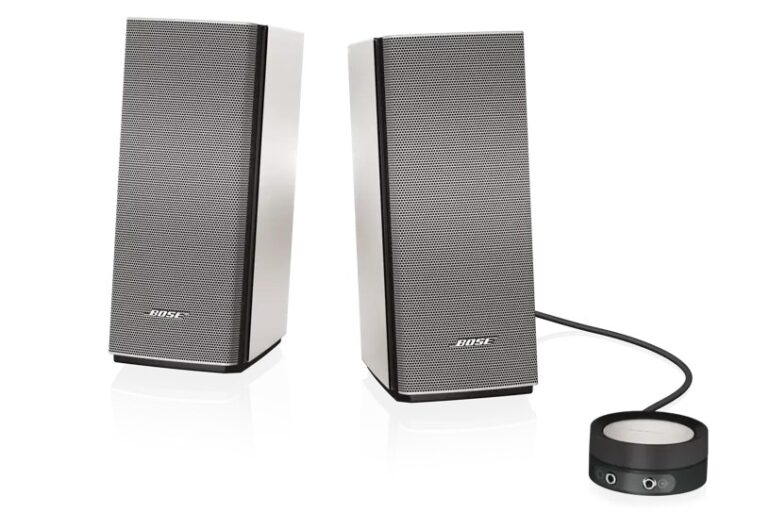The Sundance Film Festival has long been a bastion for independent cinema, a place where groundbreaking narratives and bold new voices emerge. Yet, the premiere of the festival’s first fully immersive virtual reality (VR) film marked a paradigm shift, not just for storytelling but for the intricate dance between art and technology. This was more than a movie; it was a living, breathing digital world, and its creation represented a monumental feat of software engineering. Behind the seamless illusion of an alternate reality lay a complex web of code, servers, and rendering pipelines, all held together by a rigorous, exhaustive, and innovative approach to Software Debugging. This article delves into the unprecedented technical challenges and sophisticated Debugging Techniques required to bring this cinematic revolution to life, offering a case study in modern Full Stack Debugging.
The journey from concept to a stable, awe-inspiring VR experience was fraught with peril. Every dropped frame, every millisecond of latency, and every unhandled exception threatened to shatter the illusion and, worse, induce motion sickness in the viewer. The development team had to navigate a labyrinth of potential issues, from Frontend Debugging within the VR headset itself to complex Backend Debugging of the servers that streamed the world into existence. This exploration will cover the essential Debug Tools, methodologies, and Debugging Best Practices that were forged in the crucible of this high-stakes project, providing valuable insights for any developer working on complex, performance-critical applications.
A New Frontier for Storytelling: The Genesis of a VR Masterpiece
The project, internally codenamed “Aethel,” was envisioned as a narrative experience that could only exist in VR. It was an interactive story where the viewer’s gaze, movements, and choices would subtly alter the world and the progression of the plot. This ambition immediately escalated the technical complexity far beyond that of traditional filmmaking or even standard video game development. The team was not just building a product; they were pioneering a new medium, which meant solving problems that had no established solutions.
The Monumental Engineering Hurdles
Creating a stable, high-fidelity VR experience presented a unique confluence of challenges that demanded a holistic approach to Application Debugging and System Debugging. The core hurdles included:
- Real-Time Rendering at High Framerates: VR requires a minimum of 90 frames per second (FPS) per eye to maintain immersion and prevent nausea. Any performance hiccup would be immediately noticeable and detrimental. This necessitated deep dives into Debug Performance and constant profiling.
- State Management for Interactive Narratives: Every choice a user made had to be tracked, and its consequences reflected in the world state. This created a complex state machine running on the backend, requiring meticulous API Debugging to ensure the client (the headset) and server remained in perfect sync.
- Asset Streaming and Network Latency: The rich, detailed environments of “Aethel” were too large to be loaded into memory at once. The system relied on dynamically streaming assets, making Network Debugging a critical component of the development lifecycle.
- Cross-Platform Compatibility: The experience needed to run on various VR headsets, each with its own hardware quirks and software stack, adding another layer of complexity to the Testing and Debugging process.
To manage this complexity, the team adopted a robust CI/CD pipeline from day one. However, this introduced its own set of challenges, particularly around CI/CD Debugging, where bugs that only appeared in the automated build environment had to be hunted down and resolved swiftly.
Under the Hood: The Full-Stack Debugging Pipeline
Successfully building “Aethel” required a deep understanding of the entire technology stack, from the code executing inside the headset to the microservices running in the cloud. The team’s approach to Full Stack Debugging was methodical and multi-layered, treating the entire system as a single, cohesive entity.

Frontend and Browser Debugging in the Headset
The frontend of the VR experience was built using WebXR, a technology that allows VR content to be rendered within a web browser environment. This decision, while enabling cross-platform development, brought the challenges of Web Debugging and Browser Debugging into the world of VR. The team’s primary tool was Chrome DevTools, but using it effectively required ingenuity.
They relied heavily on Remote Debugging, connecting a development machine to the VR headset over a local network. This allowed them to inspect the DOM (in this case, the 3D scene graph), analyze network requests, and, most importantly, engage in interactive JavaScript Debugging. Setting breakpoints and stepping through code that controlled user interactions or animations was essential for squashing elusive bugs. The team frequently encountered complex JavaScript Errors related to the asynchronous nature of asset loading and user input, making a mastery of Async Debugging techniques non-negotiable. For the UI overlays, which were built using a popular framework, specialized React Debugging tools were employed to trace component states and props, preventing re-rendering loops that could cripple performance.
Backend and API Debugging for a Seamless World
The backend architecture was a collection of microservices responsible for everything from user authentication and state management to asset delivery and AI-driven character behaviors. This distributed system was a hotbed for complex bugs that were difficult to reproduce. The team used a mix of Node.js and Python, which meant developers had to be proficient in both Node.js Debugging and Python Debugging.
For the Python services built on Django, the developers utilized the framework’s robust toolkit for Django Debugging, but for more complex issues, they turned to debuggers like `pdb`. Similarly, the Node.js team used the built-in Node Inspector for in-depth Express Debugging, allowing them to trace requests through middleware and controllers. A common source of Node.js Errors and Python Errors was faulty communication between services, making Microservices Debugging a top priority. The team implemented distributed tracing, which tagged each request with a unique ID, allowing them to follow its journey across different services and pinpoint the source of failures. This systematic approach to Backend Debugging was crucial for maintaining the stability of the virtual world.
Here is a simple example illustrating the difference between basic logging and using a debugger in a Node.js context:
// Basic Logging (less effective for complex objects)
app.get('/user/:id', (req, res) => {
const userId = req.params.id;
// What if the user object is massive? Logging is cumbersome.
console.log('Fetching data for user:', userId);
const user = await db.fetchUser(userId);
console.log('User data:', user); // Might be too large or complex to inspect easily
res.json(user);
});
// Using a Debugger (more powerful)
app.get('/user/:id', (req, res) => {
const userId = req.params.id;
debugger; // Set a breakpoint here
// When code execution pauses, you can inspect the entire scope:
// - req object (headers, body, params)
// - userId variable
// - Step through the db.fetchUser call to see its internal logic
const user = await db.fetchUser(userId);
res.json(user);
});
From Glitches to Perfection: Advanced Debugging and Optimization
With the basics of frontend and backend debugging in place, the team focused on the more nuanced and challenging aspects of the project: performance optimization and production stability. This is where advanced Debugging Tips and sophisticated Developer Tools came into play.

Tackling Performance Bottlenecks with Profiling
Performance was not a feature; it was a prerequisite. The team used a suite of Profiling Tools to conduct continuous Code Analysis. For the frontend, the Performance tab in Chrome DevTools was invaluable for identifying JavaScript functions that were consuming too much CPU time or causing layout shifts (which in VR translates to jarring world movements). This process of Dynamic Analysis helped them optimize rendering loops and physics calculations.
A significant challenge was Memory Debugging. Memory leaks, where unused objects are not released from memory, are catastrophic in a long-running VR session. They can lead to degraded performance and eventual crashes. The team used heap snapshot analysis to identify detached DOM elements and other sources of leaks, ensuring the experience remained smooth for hours on end. This proactive approach to Performance Monitoring was a key factor in the project’s success.
Logging, Error Tracking, and Production Debugging
You cannot fix bugs you don’t know about. The team integrated a comprehensive strategy for Logging and Debugging. While logs were useful, they were often too noisy. The real game-changer was implementing a dedicated Error Tracking service. This service would automatically capture any unhandled exceptions in the wild (during test screenings), along with detailed Stack Traces and device context. This allowed for effective Production Debugging, giving developers the information they needed to understand and fix bugs that only occurred under real-world conditions.
This system was also crucial for understanding cryptic Error Messages. Instead of just seeing “TypeError: Cannot read property ‘x’ of undefined,” the developers could see the entire execution context leading up to the error. This synergy between Testing and Debugging, especially Integration Debugging, where different parts of the system interact, was essential for building a resilient application. The process was further enhanced with Debug Automation, where scripts would run through common user journeys and flag any regressions or performance drops automatically.
Key Takeaways: Debugging Best Practices from the Bleeding Edge
The development of Sundance’s first VR film offers a powerful set of lessons and Debugging Best Practices applicable to any complex software project, especially those in emerging technology fields like VR, AR, and IoT.
- Embrace a Holistic Debugging Mindset: Modern applications are rarely confined to a single environment. Adopting a Full Stack Debugging approach is essential. A bug manifesting on the frontend might have its root cause in the database, the API, or the deployment environment.
- Leverage the Right Debug Tools for the Job: Don’t rely solely on `console.log`. Master the interactive debuggers in your IDE and browser. Utilize Profiling Tools for performance work and specialized Debug Libraries for your specific frameworks (e.g., React Debugging or Vue Debugging tools).
- Automate Your Safety Net: Combine robust Error Monitoring with automated testing. This creates a powerful feedback loop, especially for CI/CD Debugging, allowing you to catch regressions before they reach users. This is a cornerstone of effective Bug Fixing.
- Master Debugging in Modern Environments: As applications move to containerized environments, skills in Docker Debugging and Kubernetes Debugging become critical. Understanding how to inspect a running container or stream logs from a pod is the new frontier of System Debugging.
- Prioritize Clear Error Messages and Logging: When a bug occurs, a well-written error message or a structured log entry is the first and most important clue. Invest time in making your Error Messages and Stack Traces as informative as possible.
Conclusion: The Art of Code in Cinematic Innovation
The debut of the first VR film at Sundance was a testament to creative vision, but it was equally a triumph of technical execution. The invisible art of Software Debugging was the scaffolding that supported this breathtaking new form of storytelling. From the granular level of JavaScript Debugging in a headset to the high-level strategy of Microservices Debugging in the cloud, every step of the process required precision, persistence, and a deep understanding of modern Debugging Techniques.
This project proved that as our technological ambitions grow, so too must our mastery of the tools and practices that ensure stability and performance. The future of interactive media and complex web applications will not be built by developers who simply write code, but by those who have mastered the art of understanding, diagnosing, and fixing it. The success of “Aethel” is a powerful reminder that behind every magical user experience lies a foundation of meticulous, intelligent, and relentless debugging.













